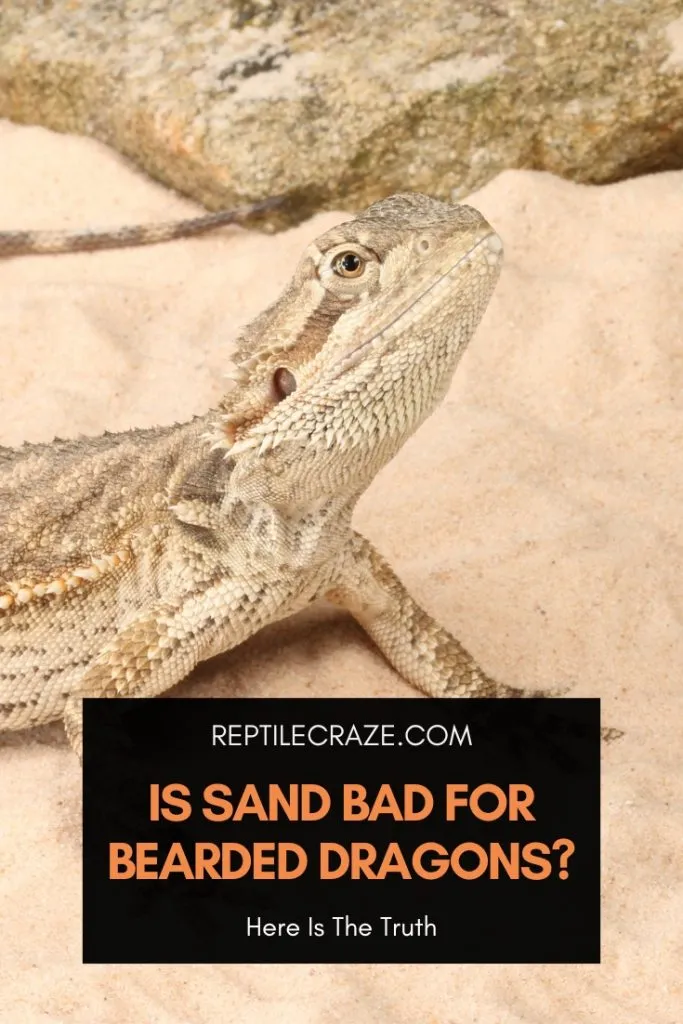
Sand has a reputation as being a bad substrate for bearded dragon habitats. But is it really that dangerous for them?
The main concern when using sand as a substrate is the risk of impaction, which can happen when bearded dragons ingest sand in an attempt to correct mineral deficiencies. Supplementing with calcium properly can prevent a bearded dragon from eating sand and eliminates that risk.
Sand comes in many different types, and it is important to know the difference between them. Read on to learn more about bearded dragon habitat sand options and how to use it safely and responsibly.
Table of Contents
Why Is Sand Bad For Bearded Dragons?
Many bearded dragon owners avoid sand for fear that their pets could become impacted.
Impaction in bearded dragons is a condition where the animal ingests an object that gets stuck in the stomach or intestines, causing pain, digestive issues, and potentially even death.
While it is true that ingestion of too much sand can result in impaction, the key to avoiding this dangerous condition is understanding why beardies ingest sand in the first place.
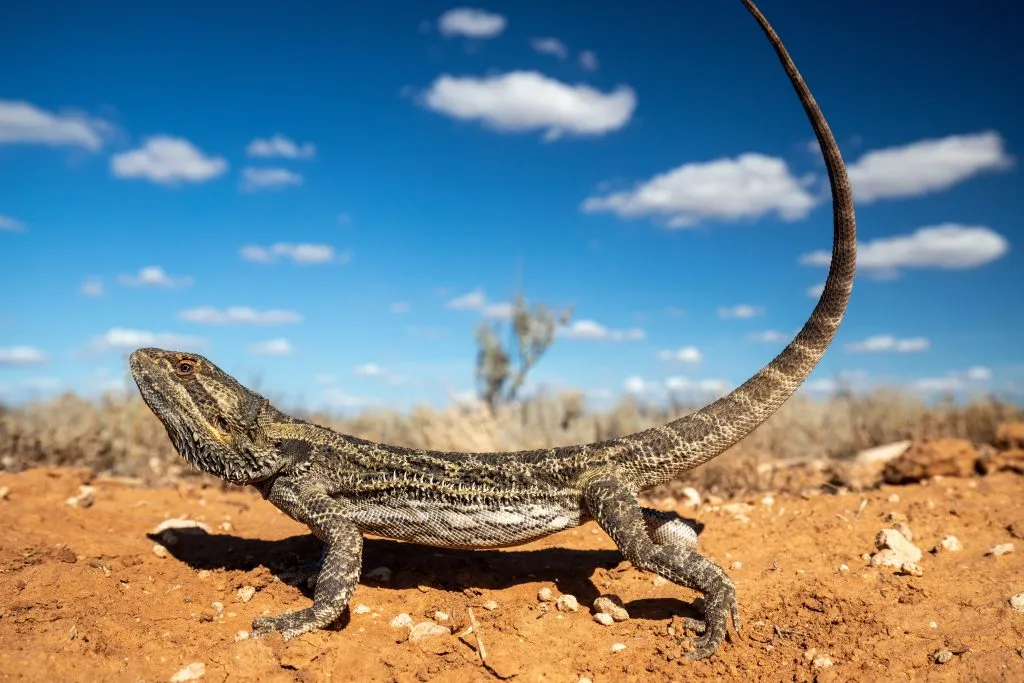
Why Do Bearded Dragons Eat Sand?
Bearded dragons require calcium in their diet. In the wild, beardies who lack calcium will intentionally eat soil in an attempt to correct the mineral deficiency.
However, captive beardies do not have the option to seek out calcium-rich soils to supplement their diets. Instead, they will eat what is available to them within their habitat – including sand, if present.
There are, therefore, two basic principles to making sure that your bearded dragon does not eat sand and risk impaction.
The first is to make sure that it is getting enough calcium in its diet, and the second is to not use sand that is tempting to eat.
Why Do Bearded Dragons Need Calcium?
Calcium is essential for healthy bone and muscle growth. It protects against serious conditions such as hypocalcemia and metabolic bone disease, which can be fatal in bearded dragons without proper calcium intake.
Calcium helps promote healthy growth throughout the animal’s life. It is also important to the development of healthy eggs in gravid females.
Calcium Supplementation for Bearded Dragons
The best way to prevent sand ingestion in bearded dragons is to make sure that they get enough calcium in their diet:
- Calcium-rich leafy greens: Examples include collard green, dandelion leaves, endive or escarole, mustard greens, turnip greens, kale.
- Calcium-rich feeder insects: Examples include Dubia roaches, hornworms, waxworms, crickets.
- Calcium supplementation: Dust greens and feeder insects with calcium powder every other day.
- Free choice calcium supplement: Shredded sepia bones in a bowl
Calcium Supplement Cautions
Too much calcium (hypercalcemia) can also be dangerous, but only when there is also too much vitamin D3. Signs of hypercalcemia include lethargy, weakness, and constipation.
If you have concerns about possible hypercalcemia in your bearded dragon, immediately stop any supplementation and consult a veterinarian.
Bearded Dragons And Calcium Sand
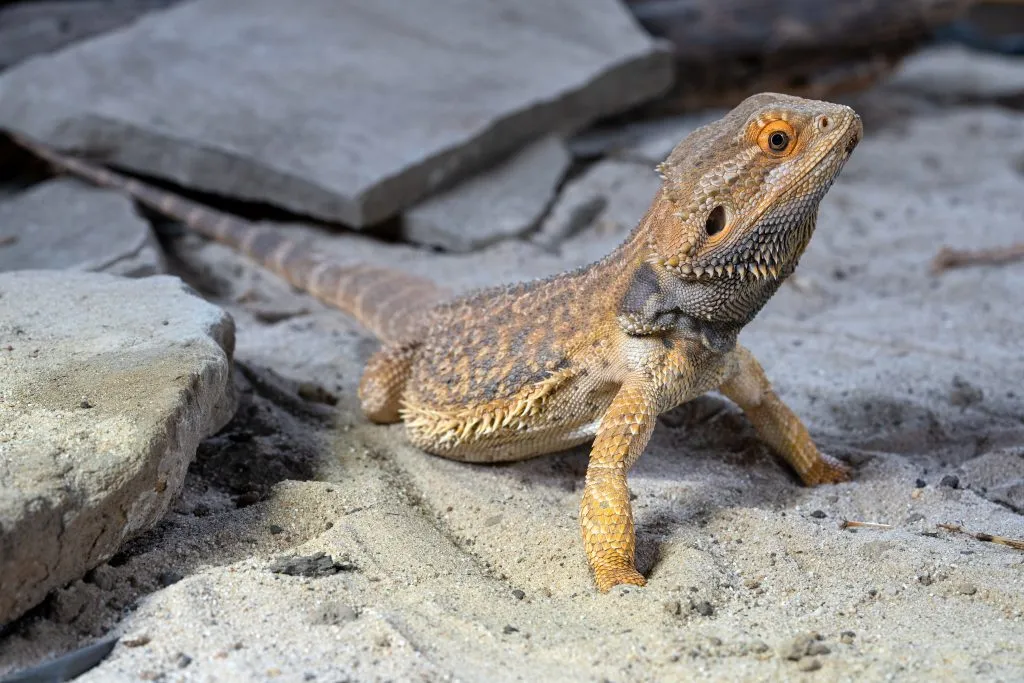
This sand is pretty popular these days. Let’s have a look at it in detail.
What Is Calcium Sand?
Calcium sand is not your typical rock-based sand that you would find on a beach or a child’s sandbox. It is comprised mostly of calcium carbonate, which is the main component of limestone.
Calcium carbonate is alkaline, and forms clumps when it gets wet. Calcium sand is widely abhorred by many reptile owners as it has a reputation for causing impactions.
Is Calcium Sand Really That Bad For Bearded Dragons?
If you want to buy sand for your reptile habitat, one of the most common ones you will find is calcium sand.
This alone speaks volumes about its relative safety since a product that frequently harms animals would not be so popular and so available.
There is also little factual information available about how often calcium sand actually causes impactions.
A recent study of bearded dragons seen at veterinary hospitals found that illness due to sand or stone impaction was relatively uncommon, and other problems such as metabolic bone disease (calcium deficiency) were usually present in those cases that did occur.
Looking at the facts, we must conclude there is not much evidence that calcium sand is, in general, a bad choice for reptile habitats. That said, we like to follow the rule “better safe than sorry”.
Since bearded dragons are known for eating soil in search of calcium, it is best to avoid using such a tempting substrate in the first place. Consider using other types of sand instead.
A Note About Vita-Sand
Vita-Sand is a vitamin-fortified calcium carbonate substrate (calcium sand with vitamins added).
The same cautions about calcium sand apply to Vita-Sand – if it is going to be tasty to your bearded dragon, just don’t use it!
Sand Options For Bearded Dragon Habitats
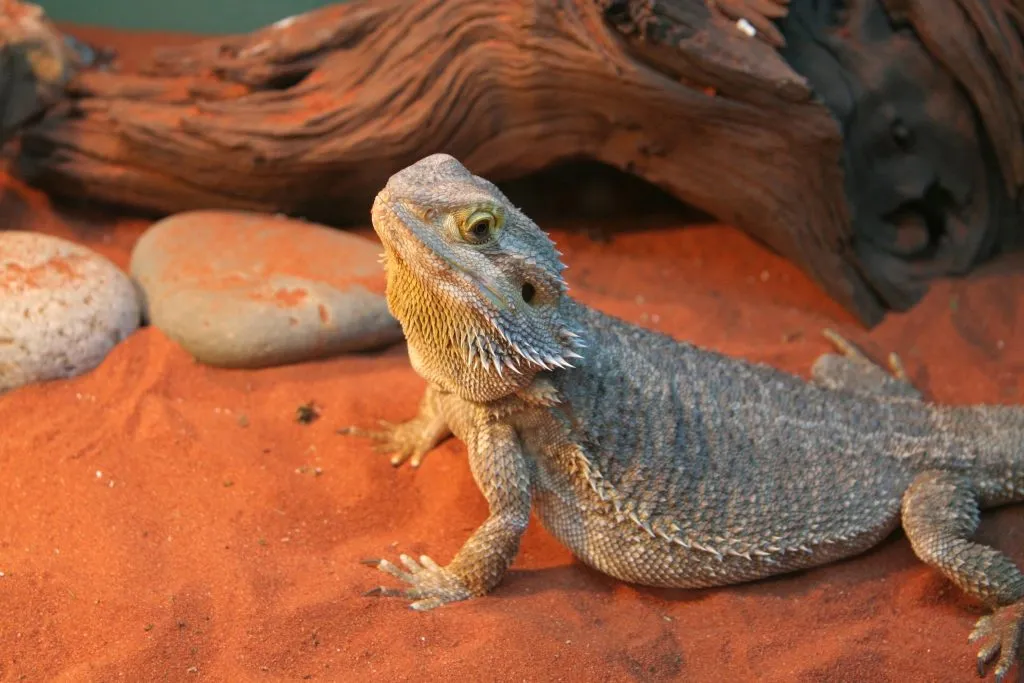
Bearded dragons like to dig. When used correctly, sand can provide them with an enriching and stimulating environment. So which sand to use?
There are good sands, and there are bad sands. We’ve already talked about calcium sand (not recommended), now let’s have a look at some others:
- Play sand – play sand is formulated to be safe for children and is equally safe for your bearded dragon. Use only new sand from the store, wash it, sterilize it and sift it so only fine particles remain.
- Reptile sand – sand sold in pet stores as “reptile sand” is specifically formulated for reptiles. It is generally safe as long as it is not “calcium sand” and doesn’t have added calcium or vitamins.
- Beach sand – beach sand should not be used for bearded dragon tanks because it can contain bacteria, parasites, small pieces of glass, and other contaminants that could be harmful to your bearded dragon.
- Construction sand – do not use! This sand can contain debris and chemicals and should never be used in reptile habitats.
The best products are, of course, those designed specifically for desert-type reptiles. Some examples of these include:
- Jurassic Natural Australian Desert Habitat
- Exo Terra Desert Sand (we reviewed this sand here)
- Zoo Med ReptiSand
Sterilize Sand Before Using It In Bearded Dragon Habitats
Wherever you get habitat sand from, it should be sterilized before use to protect your bearded dragons’ health. This eliminates any parasites and bacteria prior to use.
The simplest method to do this with new sand is to place it in a shallow layer on a baking tray and put in an oven at 350°F for 15 minutes.
Once sterilized, the sand should be allowed to cool completely before adding it to your bearded dragon’s habitat.
Alternatively, you can wash it using a disinfecting solution. To make a disinfecting solution, use four teaspoons of household bleach (free of fragrance or other additives) for every quart of water used.
Pour the sand into the bleach solution, stir, and let sit for 10 minutes before draining and rinsing it at least three times.
Allow the sand to dry completely before placing it in the habitat (you can place it in an oven to hasten the process).
With new sand, washing the sand first has the added benefit of removing dust from it. This disinfecting wash can also be used to clean used sand before placing it in back in your beardie’s habitat.
Bearded Dragons Need More Than Just Sand For Substrate
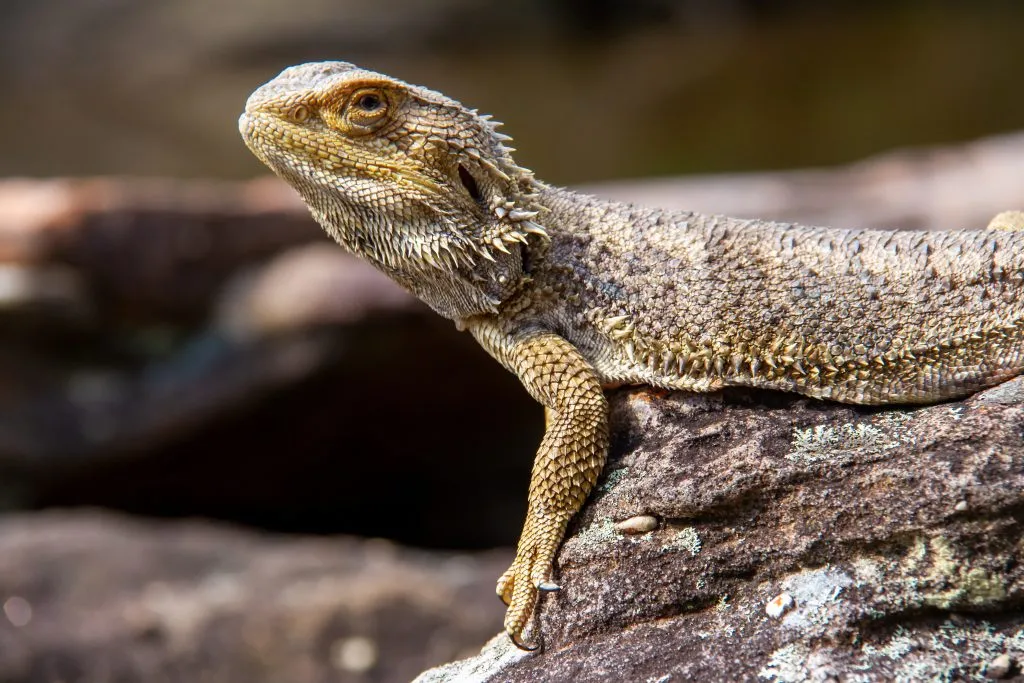
So far, we’ve discussed whether sand is safe or not, and which sands are better to use as compared to others.
But let’s not forget that sand alone is not enough to provide your bearded dragon with the proper environment.
Loose sand on its own is not a good substrate for bearded dragon habitats. The slipping and sliding caused by loose substrates can cause injuries to their joints over time, and is generally uncomfortable for them to walk on.
We recommend a mixture of 50% sand with 30% Arcadia Earthmix Arid and 20% Zoo Med Excavator Clay. This mixture compacts into a fairly firm surface that is comfortable for walking but still allows digging and burrowing.
Combine this with some logs, branches, and stones in the
How Deep Should Sand Be In A Bearded Dragon Habitat?
Bearded dragons are known for their love of digging and burrowing. To make sure that your pet is able to engage in this activity comfortably, you will want to provide at least 4-6 inches of sand in their habitat.
Some bearded dragon owners recommend up to 12 inches of substrate, if possible, to accommodate their burrowing behavior.
While this isn’t always possible, you should strive for a minimum of four inches, so they at least think they are digging a burrow!
How Often Should Sand In A Bearded Dragon Habitat Be Changed?
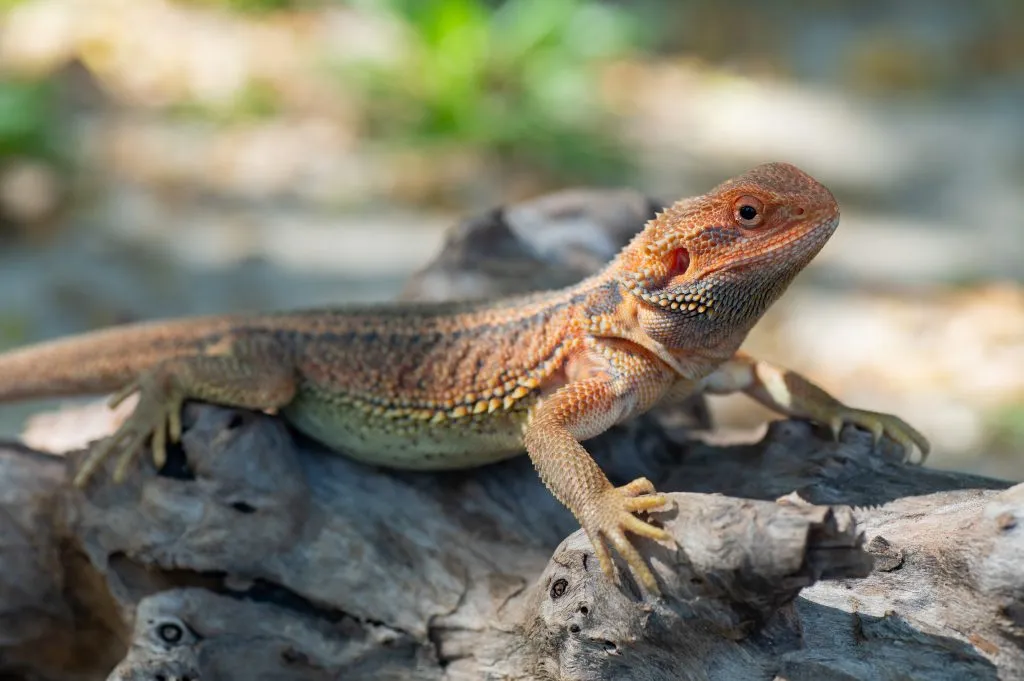
Bearded dragon sand should be spot-cleaned as needed (think litterbox!), and completely replaced at least once a month to prevent an unhealthy buildup of bacteria, mold, and parasites.
Blended substrates that include clay or topsoil will have to be thrown out, and fresh substrate used.
If you happen to be using straight sand (which is not recommended), then this could potentially be washed, sterilized, and reused.
Since habitat sand is not particularly costly, in most cases, there is little benefit to trying to clean sand for reuse. Unless your finances are particularly strained, the best option is to use fresh sand each time.
The Final Word
Sand is a great substrate for bearded dragon habitats as long as it’s the right kind of sand. We recommend using a 50/30/20 blend of sand, topsoil and clay substrates.
Sand should be sterilized before use to protect your beardie’s health and at least four inches deep in their habitat so that they can engage in burrowing behaviors comfortably.
Spot clean daily and replace completely once every month to prevent dangerous buildups of bacteria or parasites.
Follow these tips and you’ll have a great environment for your pet!
- Enchi Ball Python: A Unique and Stunning Morph of Python regius - March 27, 2025
- Emerald Tree Monitor: The Enigmatic Green Guardian of the Rainforest - March 26, 2025
- The Egyptian Cobra (Naja haje): A Fascinating Serpent - March 25, 2025
